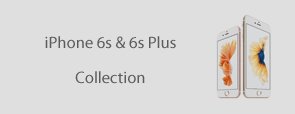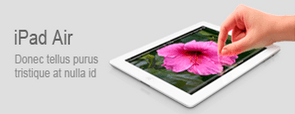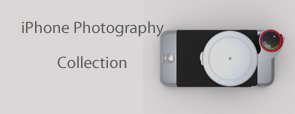Cloud Starter Kit by LittleBits
This kit includes the cloudBit plus 5 other favorite prototyping modules; everything you need to create internet-connected devices in seconds. Recreate the most popular smart devices, use littleBits to prototype the next billion dollar idea, or invent a project that solves your own, unique problem.
Recommended Age: 14+
- Includes everything you need to get started [power included!] right out of the box: 6 modules, wall power and mounting boards
- Connect everything! Now your entire littleBits library can talk to the internet and vice versa
- Build with 5 intro projects, including an SMS doorbell, internet-connected lamp and many more online!
- Automate with IFTTT to connect with any web service, like Facebook, Gmail and Twitter, or hardware like NEST and Phillips HUE
- Remote control and readout to control your circuits across the room or across the world
- Code with the cloud API or using the Arduino module for further customization [optional]
BIT MODULES AND ACCESSORIES INCLUDED
- 1 Usb Power
- 1 Button
- 1 Sound Trigger
- 1 Usb Power Adapter + Cable
- 1 Long Led
- 1 Servo
- 1 Mounting Boards
- 1 Cloud Bit™
Tips & Tricks
Connect Everything!
Welcome to the cloud! With the cloudBit, now you can snap the internet to anything. We’ve compiled a number of fun and useful tips & tricks to get your creative juices flowing. Enjoy!
THINGS YOU SHOULD KNOW
How to Set up your Cloud Module
Cloud Control
This is a littleBits web app that lets you control and receive feedback from the cloudBit
What is IFTTT?
IFTTT (If This Then That) is a service that lets you connect to different web apps and select IOT products through simple conditional statements, called recipes. With IFTTT, you can connect littleBits to Gmail, Instagram, Phillips Hue and more!
Click on the More Info tab above for more details
Product Specifications.
- Dimensions (mm): 19.05(H) x 16.51(W) x 7.62(D)
- Product Weight: 0.86 lbs (0.39 kg)
- Recommended Age: 14+
Video's & More
Littlebits CloudBit Starter Kit Video
WEB TO BIT INTERACTIONS
Extra Control with littleBits Modules
With both Cloud Control and IFTTT, we have some control over the timing and intensity of the output modules on the receiving end of a cloudBit circuit. You can also mimic these same output functionalities (and more!) with just littleBits modules. Here are some quick examples:
Extend the 1 second signal (from the cloudBit) with a timeout module. The timeout will hold the circuit on for up to 5 minutes after receiving a pulse. Circuit: USB power + cloudBit + timeout + output modules.
With a latch, you can turn a momentary pulse into an ON/OFF switch. The cloudBit will send a single pulse when triggered through the cloud. The latch will then grab this pulse and hold the circuit either off/on. Circuit: USB power + cloudBit + latch + output modules
Want a variable output? Place a dimmer after the cloudBit to adjust the percentage of signal that passes on to the circuit. Circuit: USB power + cloudBit + dimmer + bargraph.
Place an inverter after the cloudBit to trigger the circuit to turn “off” when it receives a pulse from the cloud. Circuit: USB power + cloudBit + inverter + output modules.
Variable voltage output from cloudBit
As mentioned above,you can use both Cloud Control and IFTTT to send voltage percentages (intensity levels) to the cloudBit. In Cloud Control, you can use the slider application to send a single pulse at a percent of the voltage through the cloudBit.
In IFTTT, we have even more control. The output trigger in IFTTT allows you to set both the voltage percentage and the duration of time you want your circuit to be on for.
You can use a number module to verify the percent voltage that the cloudBit sends out to the circuit. This way, you can see the voltage percentage on both sides of the interaction (online and on your circuit). This is helpful for matching certain percent voltages to specific output interactions (i.e. the angle of a servo arm).
Because we have the option of outputting variable voltage, we can use this to our advantage with the Arduino module. The Arduino module is able to look at different analog signals and determine what program to run (based on your code), like a specific song or sequence of movements. Click here for more information about using analog inputs to make selections with the Arduino module.
Let littleBits environmental sensors/ triggers work for you
Environmental sensors/triggers (like the light sensor, sound trigger and motion trigger) are great for collecting information and sending it to the cloud without you physically having to activate something. For example, we created a baby monitor that texts you when it hears noise (circuit: USB power + sound trigger + cloudBit + servo). With the motion trigger, you could make an alert for your home that calls you when someone enters. Another idea would be to place a light sensor under the last roll of toilet paper. Then you could create a recipe in IFTTT that sends you an email notification (But more TP!) whenever the light sensor is uncovered, and therefore triggered.
Triggering IFTTT with input sensors
When using littleBits sensors to trigger an action through IFTTT, note that the input threshold is 80%. This means that if you have a light sensor, it will need to sense enough light to give an 80% output voltage. You can check that this is the case using the number module.
BIT TO BIT INTERACTIONS
Bring Bit to Bit Interactions to the next level
When you set two modules to follow one another in Cloud Control, you make two circuits that can talk to each other from anywhere, even across the globe. You could keep this interaction simple like pressing a button on circuit 1 to trigger an LED on circuit 2 and vice versa, like we did in out Long Distance Lamp project. In this case, you may notice that if you hold the button down on circuit 1, the LED will stay lit on circuit 2. If you want to add a next level of interaction to these circuits, add some littleBits input modules before the cloudBits and try some of the following examples:
USB power + pulse + cloudBit 1. In this case, the circuit with cloudBit 2 will pulse to the beat of cloudBit 1. Try adjusting the speed of the pulse to see what happens.
USB power + button + latch + cloudBit 1. In this case, the circuit with cloudBit 2 will hold its state either on or off because of the latch. Turn on a light across the world!
USB power + timeout + cloudBit 1. In this case, the circuit with cloudBit 2 will stay on as long as you set the timeout for on cloudBit 1.
USB power + Arduino + cloudBit 1. Program the Arduino module to send pulses at intervals that you set, perhaps every 20 minutes, to the circuit with cloudBit 2.
Create an infinite loop
By connecting the output of each cloud module to its own input with a double OR module. The two circuits will then play tag with another. Check out this awesome Cloud Tag project by Community Pro, RichB.
Use littleBits environmental sensors/triggers
on one cloudBit circuit to automatically trigger an action on a second cloudBit circuit. For example, when a light sensor on circuit 1 sees light, it will trigger the cloudBit on circuit 2. Also try using a sound trigger, motion trigger, pressure sensor, bend sensor, or roller switch!
OTHER TIPS:
When prototyping a project that uses the cloudBit, we often use a button in place of the cloudBit to cut down on time.
You can get the same functionality with the button (without having to fiddle with your phone). Once the circuit and build for the project are set, add the cloudBit and test from there.
Want automatic and manual transmission?
In other words, if you would like to be able to control a project using either the cloudBit or a manual input (i.e. a button module), you can use a double OR module. We did this in the circuit for our project, the WiFi Music Player.
Use the cloudBit as a proximity beacon.
Set up a circuit in your car (you will need to plug the USB power into a USB port). Set up the cloudBit on a specific WiFi network (i.e. your home network). Now, when you pull into the vicinity of your home, your cloudBit will automatically log onto the WiFi and trigger the cloud. You could set a recipe in IFTTT that texts “honey I’m home” when you arrive.
Use littleBits to control other internet connected devices
like Phillips Hue or Wemo. You can set up recipes easily in IFTTT to make this happen.













